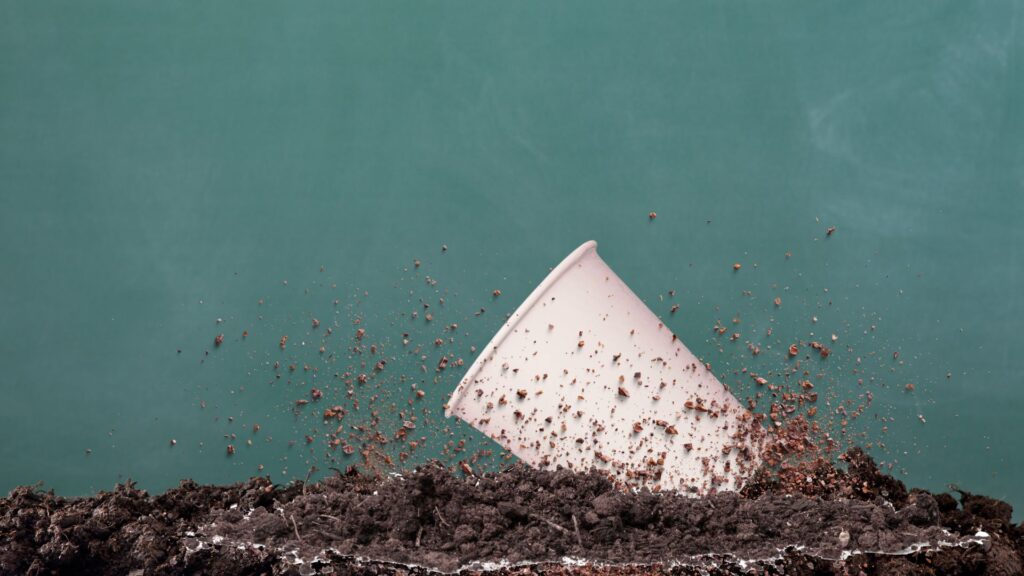Compostable packaging is a type of packaging designed to fully break down through natural biological processes, turning into compost, water, and carbon dioxide without leaving harmful residues or microplastics. This process occurs under controlled conditions of temperature, humidity, and oxygen, through the action of aerobic microorganisms (bacteria and fungi). According to the European standard UNI EN 13432, a material must disintegrate within 12 weeks and biodegrade at least 90% within 6 months—without compromising compost quality (i.e., no heavy metals or toxic substances)—to be defined as compostable.
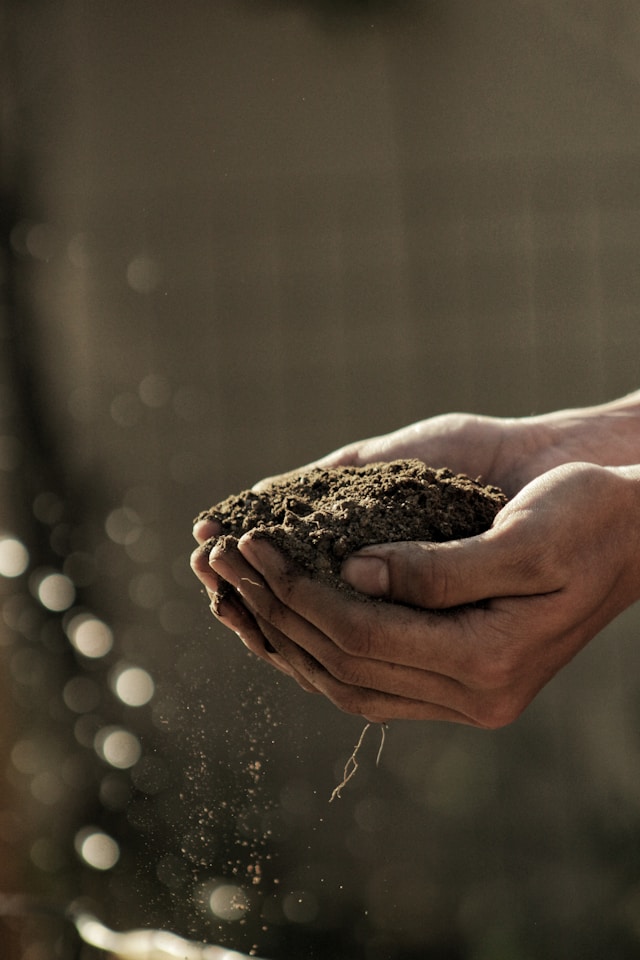
What is the difference between compostable and biodegradable packaging?
Biodegradability is a general property: it indicates that a material can be broken down by natural microorganisms (bacteria, fungi, algae) into simpler compounds. However, it does not specify the required time, conditions, or absence of residues. Some biodegradable materials may take years to fully degrade, especially in oxygen-poor or low-temperature environments, and can leave behind microplastic traces.
Compostable, on the other hand, is a stricter and measurable subset of biodegradability. It must ensure physical disintegration within 12 weeks and chemical biodegradation within 180 days (i.e., 90% of organic carbon turned into CO₂), with no toxic substances and a neutral or positive impact on the resulting compost. In short: all compostable materials are biodegradable, but not all biodegradable materials are compostable.
How does packaging compostability work?
The compostability process of packaging is driven by a series of biological and chemical transformations in the presence of oxygen (aerobic composting). During degradation, the organic polymers in the packaging are broken down by extracellular enzymes into simple molecules (monomers, organic acids), which are then metabolized into CO₂, H₂O, and biomass.
Environmental conditions are key:
• Temperature: around 55–60 °C for industrial composting
• Humidity: 50–60%
• Constant oxygenation
• Neutral or slightly acidic pH
There are two main types of composting
Industrial Composting
This takes place in specialized facilities where environmental conditions are optimized and controlled to enable rapid and safe decomposition of organic materials. The process can be completed in about 90 days and also handles more “resistant” compostable materials like certain bioplastics.
Many certified packaging materials (e.g., PLA or paper with compostable coatings) do not degrade effectively in home environments and require industrial conditions. This leads to a common misconception: consumers, seeing “compostable” on the label, often assume they can compost it at home, when the material actually needs high temperature and humidity not achievable in household composting.
Hence, it’s crucial that packaging clearly indicates whether it is only industrially compostable, to prevent incorrect disposal that undermines both home composting and separate waste collection systems.
Home Composting
This occurs in home compost bins or outdoor heaps, where conditions are variable and generally suboptimal. Temperatures rarely exceed 30–40 °C, significantly slowing the breakdown of complex materials.
Only easily degradable items, like untreated paper, food scraps, and certain biopolymers certified for home use, can be composted this way. For home composting suitability, a product must display a certification like “OK compost HOME” (issued by TÜV Austria), ensuring it composts even under milder conditions.
Misunderstandings are common here too: many industrially compostable materials are mistakenly added to home compost bins, where they do not fully degrade, causing residues, odors, and contamination—disheartening consumers who expect the material to “disappear” after a few months.
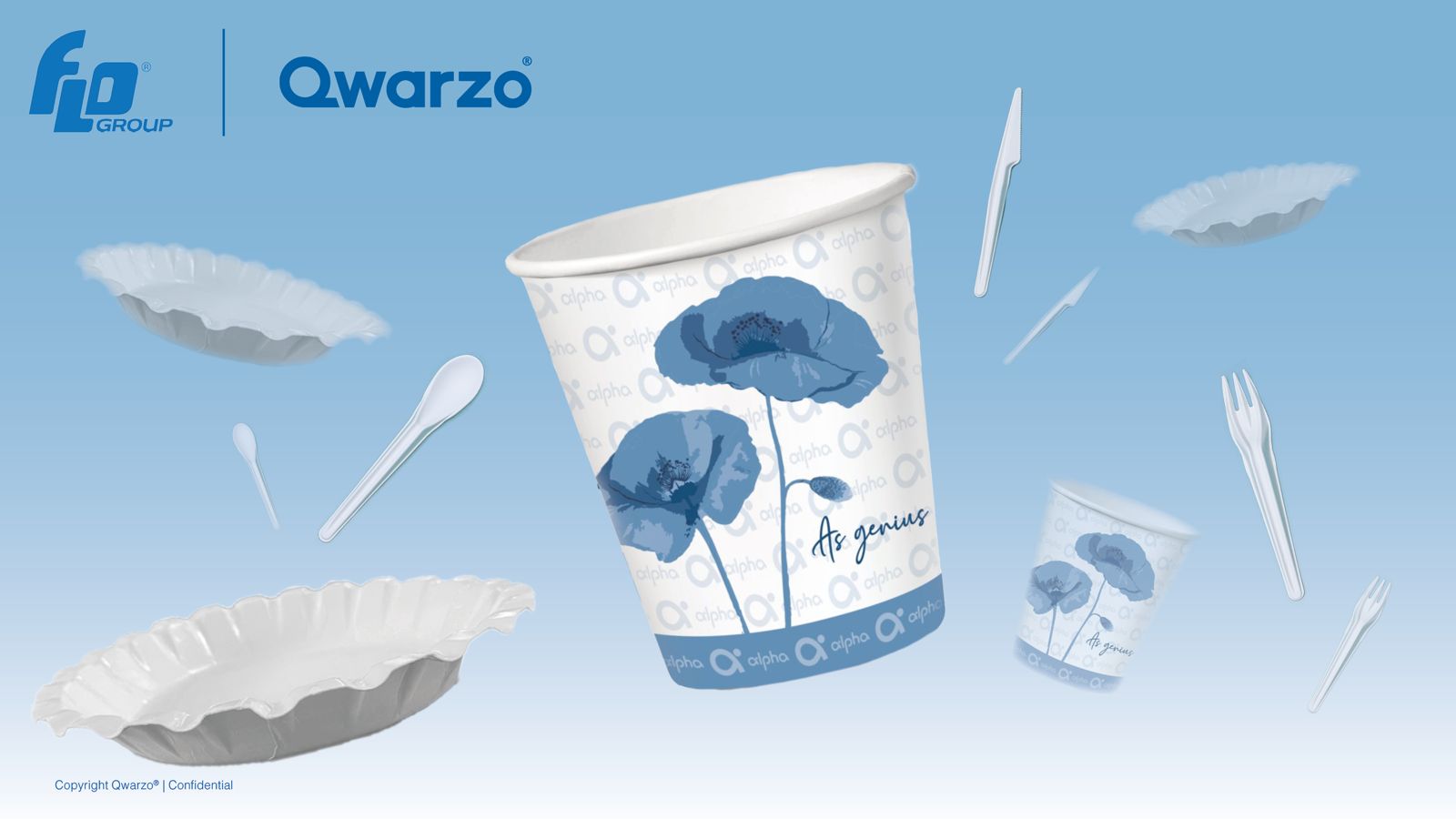
Education and transparency: a critical issue
Brands must provide clear labeling, and citizens must learn the difference between the two composting methods. The term “compostable,” if not accompanied by clear disposal instructions, can lead to well-meaning but harmful behaviors, both for the environment and waste collection efficiency.
Every compostable product should state:
• Where it can be composted (industrial facility or home compost)
• Timeframes for degradation
• Certifications supporting the claim
Only then can compostable packaging be a real sustainable solution, not just a label.
What environmental benefits does compostable packaging offer?
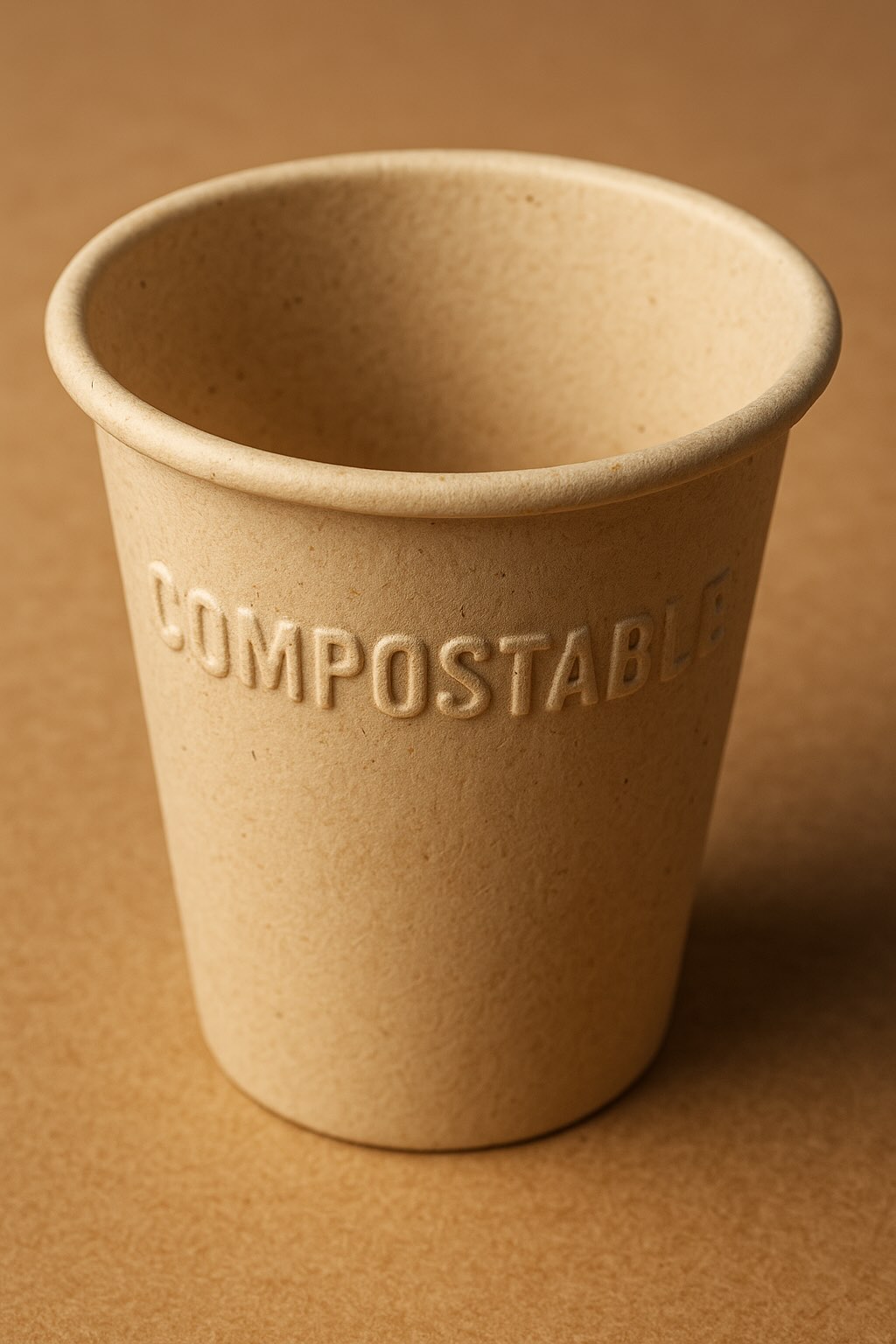
Adopting compostable packaging brings several scientifically documented environmental benefits:
1. Reduction of Plastic Pollution
Compostable materials are often derived from renewable biopolymers (e.g., PLA – polylactic acid, corn starch, cellulose, or PHA – polyhydroxyalkanoates), which do not leave microplastics or persist in the environment. If properly disposed of, they don’t contribute to marine or landfill waste.
2. Enhancement of Organic Waste
Compostable packaging can be discarded with food scraps in organic waste collection, helping produce high-quality compost for agriculture and urban greenery. This reduces landfill use and closes the carbon loop.
3. Lower Climate Impact
Producing compostable biopolymers—especially from non-food-competitive plant sources—generates a lower carbon footprint than traditional plastics. Additionally, the resulting compost can enhance soil’s carbon retention capacity, helping to mitigate climate change.
How to recognize certified compostable packaging?
To ensure a package is truly compostable (and not just greenwashed), look for recognized certifications. The main ones include:
– UNI EN 13432: European standard for industrially compostable materials. Defines biodegradability, disintegration, ecotoxicity, and heavy metal content requirements.
– OK compost INDUSTRIAL (TÜV Austria): Indicates suitability for industrial composting only.
– OK compost HOME: Certifies compostability in home settings.
– Seedling (sprout logo): European mark by European Bioplastics, compliant with EN 13432.
Practical consumer tips:
– Look for the logo directly on the package.
– Check for specific wording like “industrially compostable” or “suitable for home composting.”
– Avoid vague terms like “biodegradable” or “100% natural” unless backed by official certification.
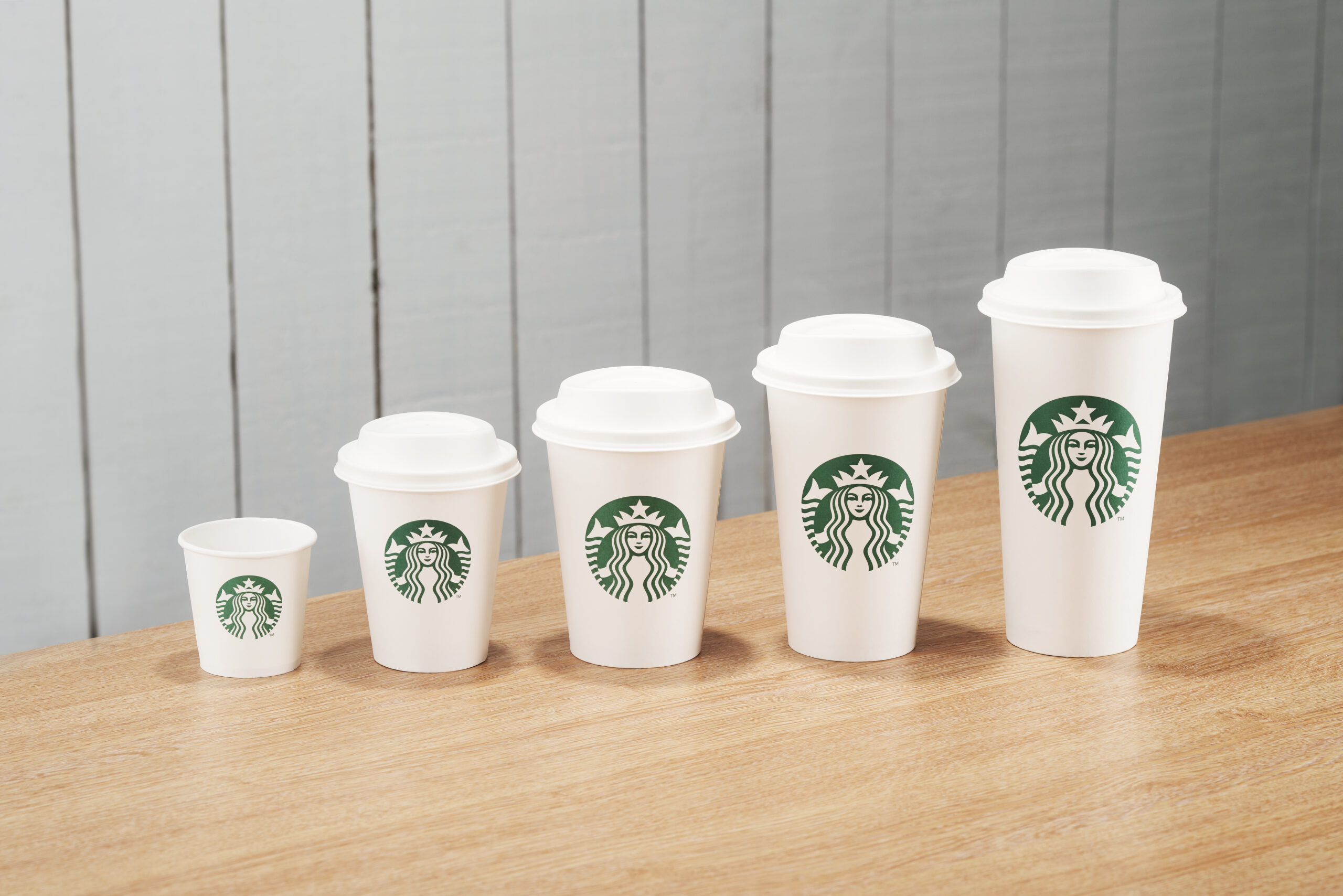
Conclusion
Compostable packaging is a tangible solution to reduce the environmental impact of packagin, provided it’s properly designed, transparently certified, and correctly disposed of.
It offers measurable benefits: less plastic waste, enhanced organic recycling, lower CO₂ emissions. But for the system to work, consumers must be informed, and infrastructure for organic waste collection and treatment must improve.
Looking ahead, innovation in sustainable materials is opening new paths.
One example is Qwarzo®, our mineral-based coating for paper, cardboard, or natural fibers. It not only offers high barrier performance against water, humidity, oils, and oxygen, but also preserves the compostability of the substrate it’s applied to—making it certifiable for home composting.
This means that materials treated with Qwarzo® can effectively degrade even in uncontrolled conditions, making the shift toward truly circular packaging more widespread and accessible.

